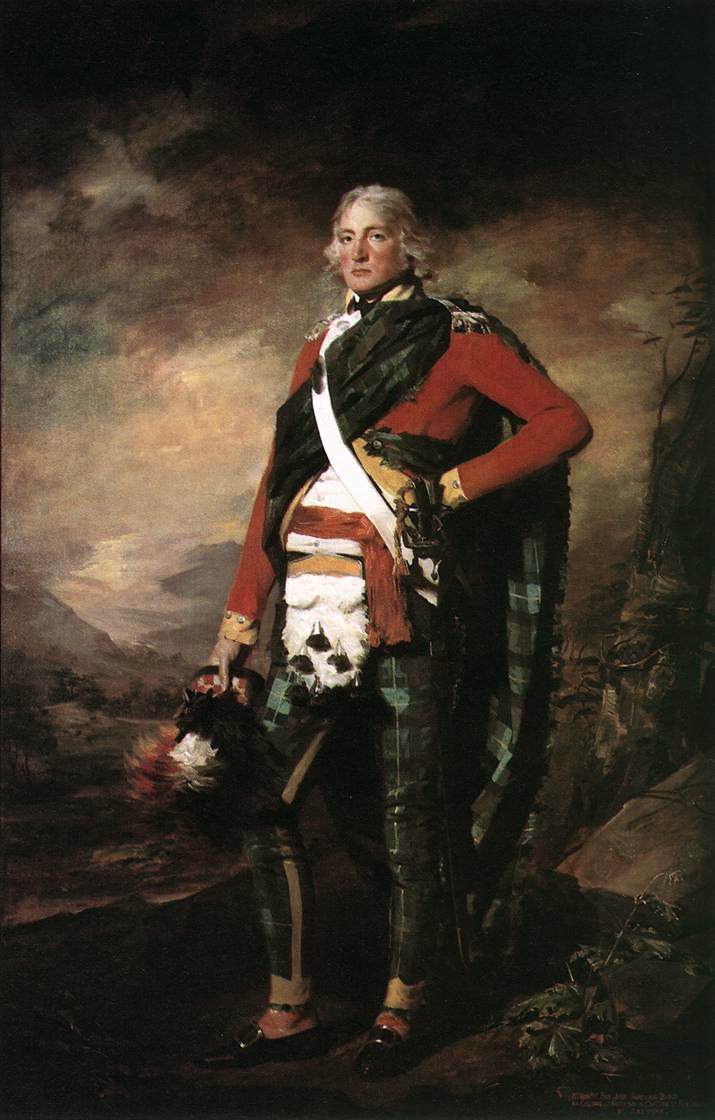Table of Content
I. Introduction
In the annals of Scottish history , few names evoke as much fascination as Clan Sinclair. With roots tracing back centuries, Clan Sinclair emerges as a prominent figure in the tapestry of Scottish heritage, renowned for its courage, influence, and enduring legacy.
From its origins in the medieval era to its enduring presence in contemporary times, the Sinclair clan has left an indelible mark on the landscape of Scotland. In this article, we embark on a journey through the annals of time to unravel the captivating story of Clan Sinclair, exploring its origins, traditions, and enduring significance in the rich tapestry of Scottish culture .
A. A Brief Overview of Clan Sinclair

Clan Sinclair is a prominent Highland Scottish Clan that traces its origins back to Normandy in France and settled in Scotland in the 11th century. The Sinclair family quickly became prominent, acquiring extensive landholdings and becoming influential figures in Scottish history. They contributed as knights, soldiers, and politicians, leaving a lasting impact on Scottish history.
Henry Sinclair, an Earl of Orkney in the 14th century, stands out as a notable figure within the clan. He is believed to have voyaged to North America nearly a century before Christopher Columbus. During the 18th-century Jacobite uprisings, many Sinclair clan members supported Bonnie Prince Charlie.
Clan Sinclair remains active worldwide, maintaining a strong connection to their Scottish roots. They uphold a deep sense of identity and pride in their heritage, organizing regular gatherings and events to commemorate their rich history and culture.
B. The original name of Clan Sinclair
The name Sinclair is thought to have its roots in “Saint-Clair-sur-Epte”, a town in Normandy, France, where the ancestors of Clan Sinclair are believed to have come from. The initial Sinclair to reach Scotland was William de SainClair, who arrived alongside William the Conqueror in 1066.
II. Clan Sinclair History

A. Wars of Scottish Independence: The Clan Sinclair Legacy Forged
During the tumultuous Wars of Scottish Independence, Sir William Sinclair of Rosslyn, a significant figure, was taken captive during the Battle of Dunbar in 1296. His likely imprisonment in the Tower of London highlighted the challenges endured by his clan. In the Battle of Roslin in 1303, led by Henry Sinclair of Rosslyn and the Clan Comyn, the Scots emerged victorious against English forces. Their bravery was evident once more at the Battle of Loudon Hill in 1307, where Henry Sinclair of Rosslyn fought alongside Robert the Bruce against the English.
The tragic events of the Battle of Teba in 1330 saw the deaths of Sir William Sinclair, the heir to Henry, and his brother John, who intended to transport Robert the Bruce's heart to the Holy Land. Their final resting place is Rosslyn Chapel, established by William Sinclair, the 1st Earl of Caithness.
B. The 16th Century: A Century of Sacrifice
During the 16th century, William Sinclair, the 2nd Earl of Caithness, and approximately 300 Sinclairs were lost in the Battle of Flodden in 1513 as they fought for James IV of Scotland. In 1568, Henry, the 3rd Lord Sinclair, significantly aided Mary, Queen of Scots, in her escape from Lochleven Castle. William Sinclair of Mey was knighted by King James VI of Scotland in 1592.

C. The 17th Century: Shifting Fortunes
In the 17th century, there were major shifts in the fortunes of the Sinclairs. They had to sell off some of their Caithness lands to deal with debts, and conflicts within the clan led to the Battle of Altimarlach in 1680, where they fought against the Clan Campbell.
According to legend, many Sinclairs died in the battle, so much so that the Campbells were said to have crossed the water without getting their feet wet. Nevertheless, the Sinclairs regained the earldom in 1681 through a decree from Parliament, demonstrating their enduring power and influence.
D. The 18th Century and Jacobite Risings: A Changing Loyalty
During the Jacobite uprisings, the Sinclairs initially backed the cause in 1715. However, by the 1745 uprising, they had switched their loyalty to the British Hanoverian government. In the Battle of Culloden in 1746, Sir James Sinclair of Rosslyn commanded the Royal Scots regiment fighting for the British Hanoverian government.
III. Clan Sinclair Crest and Coat of Arms
A. Clan Sinclair Crest
The combination of these symbols in the Clan Sinclair crest not only honours the historical roots of the clan but also conveys enduring values such as readiness, resilience, and a connection to the fertile landscapes of their ancestral lands. The crest is a proud emblem, representing the identity and spirit of Clan Sinclair's history across generations.
Clan Sinclair
Gaelic Name: Mac na Ceardadh
Crest: A cock, proper, armed, and beaked Or
Motto: Commit thy work to God
Origin of Name: Place name, French de Sancto Claro
Badge: Whin
Lands: Midlothian, Caithness, Orkney
Clan Chief: The Rt. Hon. The Earl of Caithness

The Clan Sinclair crest features a striking cock, depicted in its natural colours and adorned with a golden beak and talons. With its keen gaze and majestic stance, the cock symbolizes watchfulness and readiness to defend Clan Sinclair's honor and territory.
The clan motto, "Commit thy work to God", serves as a steadfast reminder of faith and devotion, guiding Sinclair warriors through the trials of battle and the challenges of life with unwavering resolve. The crest and motto encapsulate the values of courage, faith, and dedication that have defined Clan Sinclair throughout the ages.
B. Clan Sinclair Coat of Arms
The coat of arms is how families and knights could be identified through symbols and signs on banners, shields, or seals. By creating crests and coats of arms, warriors could be identified on the battlefield when encased in armor and people could be seen as part of a family. The coat of arms was usually reserved for Royalty or Noblemen.
The coat of arms of Clan Sinclair is a symbol rich in history and significance, representing the steadfastness and commitment of Clan Sinclair's virtue and righteousness to their Norman ancestors and the Christian faith. The elements on the Clan Sinclair coat of arms reflect the courage, honor, and devotion of the Clan Sinclair, as a timeless reminder of their proud lineage and contributions to Scottish history and culture.
IV. Clan Sinclair Tartan

The Clan Sinclair Tartan, originating from the 18th century, showcases a design of green, navy blue, and black stripes accented by delicate white lines. Named after the influential Sinclair family, renowned in medieval Scotland, this tartan has garnered favor among Scottish aficionados. It is frequently incorporated into classic Scottish garments like kilts and scarves, serving as a cherished emblem of Scottish heritage and customs due to its distinctive pattern and historical significance.
Explore the timeless traditions of Clan Sinclair through our collection of tartan products on our website. And bring a piece of the clan's history into your present.
V. Prominent Members of Clan Sinclair
A. Henry I. Sinclair, Earl of Orkney (c. 1345–1400):

Henry Sinclair, Earl of Orkney, is perhaps one of the most renowned figures in Clan Sinclair’s history. Although the extent of his explorations remains debated among historians, his purported journey to North America before Columbus significantly impacted global exploration.
If validated, Sinclair's voyage would predate Columbus's famous expedition, potentially altering perceptions of European discovery and interaction with the New World. Additionally, Sinclair's leadership in Orkney solidified his influence in northern Scotland, contributing to the region's governance, defence, and cultural development.
B. William Sinclair, 1st Earl of Caithness (d. 1480):
William Sinclair is a prominent figure in late medieval Scotland. He played a significant role in Scottish politics and held various positions of authority, including Lord Chancellor of Scotland. His role as a trusted advisor to the monarchy and his involvement in key governmental decisions helped shape the course of Scottish governance during the late medieval period.
Furthermore, his stewardship of the Caithness region facilitated economic development and social progress, enhancing the welfare of its inhabitants.
C. Col. George Sinclair (Circa 1600):
Colonel George Sinclair, a prominent figure of his time, made significant contributions to Scottish military history. As a skilled military leader, Sinclair played a crucial role in various conflicts and campaigns, demonstrating exceptional bravery and strategic insight. During the Thirty Year's War in continental Europe, he notably commanded the Sinclair Regiment, a renowned unit of Scottish soldiers.
Sinclair's leadership and valor earned him respect and admiration both at home and abroad, bolstering Scotland's military reputation on the international stage.
D. Sir John Sinclair, 1st Baronet of Ulbster (1754-1835):

Sir John Sinclair, 1st Baronet of Ulbster, was a pioneering figure whose contributions spanned various fields, leaving a lasting impact on Scottish society. As a statesman, he played a pivotal role in agricultural reform and rural development, spearheading initiatives to improve farming practices and increase agricultural productivity. Sinclair's influential work culminated in the publication of the "Statistical Account of Scotland," a comprehensive survey documenting the social, economic, and agricultural conditions of Scotland's parishes.
Furthermore, his efforts to promote education and scientific innovation led to the establishment of institutions such as the Board of Agriculture and the Highland Society of Scotland, fostering intellectual exchange and progress. Sir John Sinclair's visionary leadership and dedication to social improvement continue to be celebrated, shaping the trajectory of Scotland's agricultural and intellectual landscape for generations to come.
E. Malcolm Sinclair, 20th Earl of Caithness (born November 3, 1948):

Malcolm Sinclair, 20th Earl of Caithness (Chief of Clan Sinclair), has made notable contributions to various spheres, particularly in business and public service. As a successful businessman, he has demonstrated leadership and entrepreneurship in various industries, contributing to economic growth and innovation. Beyond his business endeavors, Lord Caithness has also dedicated himself to public service, serving as a Member of Parliament and holding various governmental positions.
His advocacy for issues such as environmental conservation, rural development, and community welfare has positively impacted society. Additionally, Lord Caithness's commitment to philanthropy and charitable causes further underscores his dedication to making a difference in the lives of others.
VI. Conclusion
In conclusion, Clan Sinclair stands as a testament to the enduring spirit of Scottish heritage and the remarkable contributions of its members throughout history. From its legendary chiefs and leaders to its pivotal roles in exploration, politics, and culture, Clan Sinclair has left an indelible mark on the landscape of Scotland and beyond.
Through their courage, resilience, and unwavering commitment to their values, the Sinclairs have shaped Scottish history and continue inspiring admiration and fascination. As custodians of a proud legacy, Clan Sinclair remains a beacon of tradition and unity, embodying the timeless spirit of Scottish identity and heritage for generations to come.
Frequently Asked Questions
What is the Sinclair clan known for?
The clan played a significant role in Scottish history. It was known for its military prowess, with members serving as knights, soldiers, and politicians and playing a significant role in Scottish history. One of the most notable members of the clan was Henry Sinclair, who was the Earl of Orkney in the 14th century.
What kind of surname is Sinclair?
Scottish and English: of Norman origin, a habitational name from Saint-Clair-sur-Elle (Manche), so called from the dedication of its church to Saint Clarus (see Clare 3).
What is the significance of the Clan Sinclair crest?
The Clan Sinclair crest features a falcon perched on a rock, holding a broken spear in its beak. This emblem symbolizes vigilance, strength, and resilience.
Are there any Clan Sinclair gatherings or events held regularly?
Clan Sinclair organizations often host gatherings, reunions, and events where members can celebrate their heritage and traditions.
What notable Clan Sinclair castles or historic sites can be visited?
Castle Sinclair Girnigoe in Caithness and Rosslyn Castle near Edinburgh are among the notable castles associated with Clan Sinclair.






